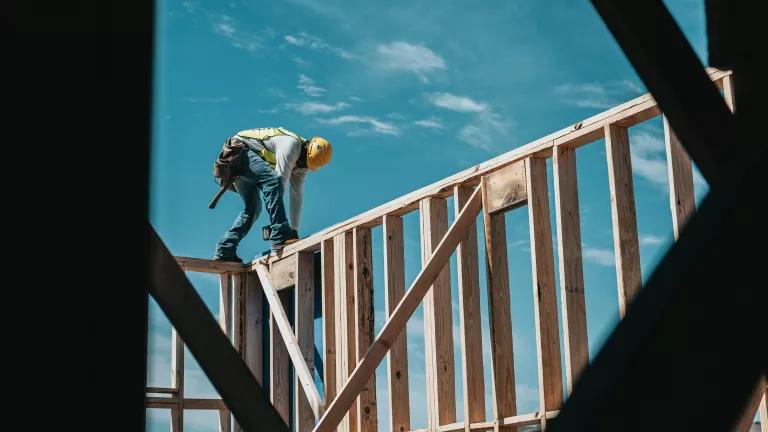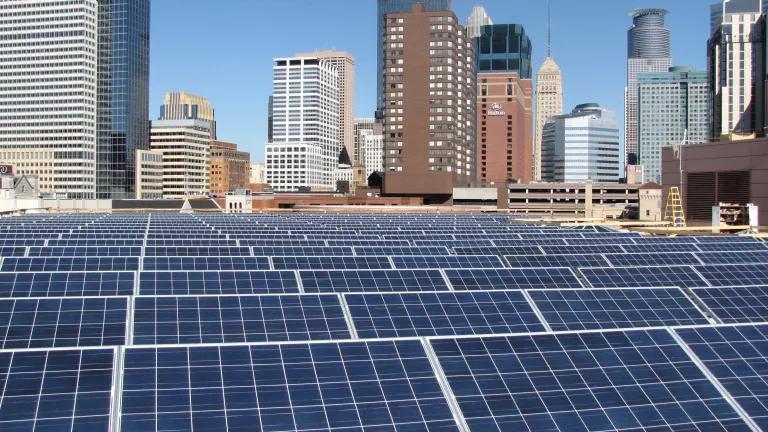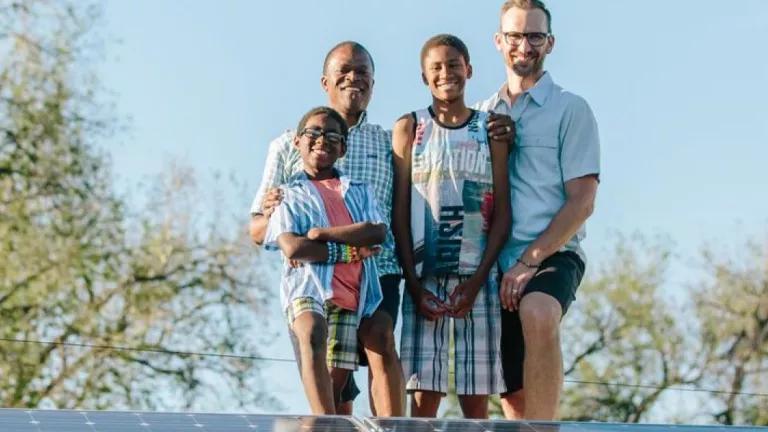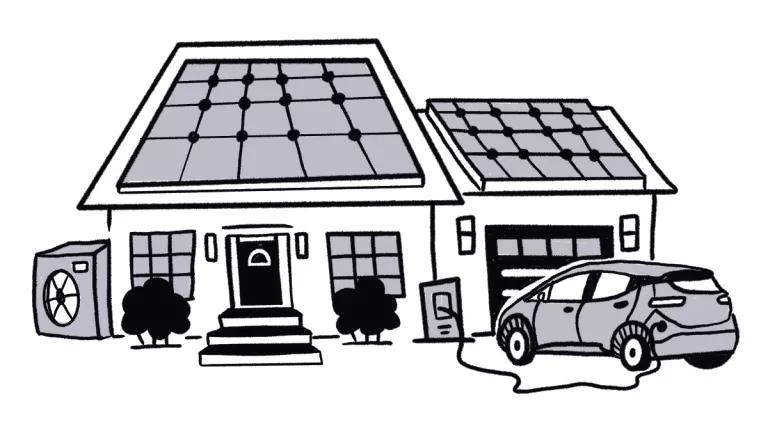EPA Announces Awards for a National Clean Energy Finance Network
EPA announces $20 billion in competitive awards under the Greenhouse Gas Reduction Fund (GGRF) to launch a National Clean Energy Finance Network

Josh Olalde
Earlier today, the Environmental Protection Agency (EPA) announced that 8 awardees will receive competitive funding under the historic Greenhouse Gas Reduction Fund (GGRF). The $27 billion financing program established in the Inflation Reduction Act of 2022 is an unprecedented investment in climate action and communities, directing long-overdue funding to projects that will reduce pollution, lower energy costs for families across the United States, and create good-quality jobs – all while catalyzing an unprecedented wave of private sector investment.
What is the GGRF?
The GGRF aims to accelerate the transition to a more equitable, more affordable, and more prosperous clean energy future. The program builds on the successful track records of green and community-based lenders across the country, providing a never-before-seen infusion of federal funding to help scale sustained investment in low- and zero-emissions projects. More than two-thirds of all GGRF funding will go to projects in communities that often struggle to access capital for projects that reduce pollution and lower household energy bills, including communities of color and low-income, disadvantaged, rural, Tribal, and energy transition communities. The GGRF was established precisely to fill this gap, with the potential to transform how financing flows to projects that improve people’s lives and create good jobs and economic opportunity.
Unlike conventional grant programs, the GGRF is designed to leverage private capital. By statute, GGRF funding must go to projects that not only reduce pollution, but also attract additional co-investment from private markets. According to McKinsey, the GGRF’s $20 billion green lending programs will mobilize more than 12 times that amount in just ten years, spurring $250 billion in combined public financing and private co-investment.
Since the early days of GGRF implementation, NRDC has been hard at work encouraging EPA to design a program that is equitable and effective. Today’s announcement is the culmination of a thorough process implemented by EPA that aligns with what Congress envisioned and an important step towards turning the vision of GGRF into a reality.
The National Clean Energy Finance Network Created by GGRF:
The GGRF includes three separate but complementary programs, each unique in its design and mix of awardees. Today, EPA announced $20 billion in awards for two of the three programs, as detailed below:
- The $14 billion National Clean Investment Fund (NCIF) provides awards to 3 national nonprofit finance coalitions: Climate United, Coalition for Green Capital, and Power Forward Communities. These entities will be responsible for helping to transform the clean energy financing market, as well as making financing available to individuals and families, nonprofit organizations, small businesses, community lenders, and others for projects that decarbonize buildings, transportation, distributed power generation, and more. At least 40 percent of NCIF investments are required to benefit low-income and disadvantaged communities.
- The $6 billion Clean Communities Investment Accelerator (CCIA) provides funding to 5 nonprofit financing hubs that will rapidly expand the clean finance ecosystem via community lenders that have the experience, expertise, and relationships needed to deploy capital in underserved markets. The CCIA is exclusively dedicated to projects in low-income and disadvantaged communities, and funds will flow to these communities through traditional and Native community development financial institutions (CDFIs), green banks, credit unions, minority depository institutions, and others. CCIA awardees include Appalachian Community Capital, Inclusiv, Justice Climate Fund, Native CDFI Network, and Opportunity Finance Network.
Awards are yet to be announced for the third GGRF program: Solar for All (SFA). This $7 billion program provides funding to accelerate solar and storage deployment programs across the country. SFA funds are exclusively dedicated to projects in low-income and disadvantaged communities, which face an average energy burden three times higher than non-low-income households, and are disproportionately less likely to adopt solar. These investments will help communities deploy residential rooftop and community solar, integrated energy storage, and enabling upgrades.
What’s Next for the GGRF?
Now that EPA has announced awards under two of these three programs, the agency will work with the awardees to negotiate and finalize contract agreements and formally obligate funds by September 30, 2024. It is anticipated that EPA will make SFA award announcements in the near future, which will be under a similar timeline. Throughout this process, NRDC and other stakeholders have an important role to play in ensuring that states, municipalities, and communities are not only aware of the GGRF, but also prepared to engage with the awardees to maximize GGRF’s impact.
It is critical that officials at all levels of government, along with partners at community-based organizations, in the NGO community, and the philanthropic sector now consider what steps and actions are needed to build pipelines of projects eligible for GGRF funding. Similarly, it is incumbent on GGRF awardees to thoroughly engage with these partners as they refine their business plans and ready for capital deployment. The GGRF has unmatched potential to invest comprehensively in communities and transform how they access finance, but that potential will only be realized if they are prepared to deploy GGRF capital.
In the weeks and months ahead, NRDC – as a neutral third party that did not apply for any GGRF funding – will continue advocating for design principles that maximize the program’s benefits for communities and the climate, consistent with the climate goals of the United States. This will include encouraging EPA and awardees to create shared infrastructure, as well as develop and enforce clear and consistent project standards across GGRF needed to truly spur market transformation and attract private capital at scale. Likewise, in collaboration with our partners in the GGRF Best Practices for Equity and Governance Alliance, NRDC will continue working to ensure that NCIF, CCIA, and SFA awardees make good on their commitments to maximize the environmental justice and community benefits of this historic program.



